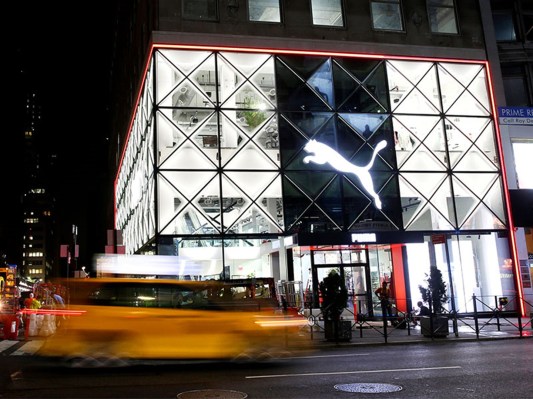While some brands moved away from web3 in 2023 during a long crypto winter, Puma stayed the course and its head of emerging technology, Ivan Dashkov, told TechCrunch+ it has no intentions of leaving.
After two years working with web3, Puma’s tech revenues remain modest, but the sportswear manufacturer intends to be ready for a more crypto-friendly future. “Web3 is a big shift in how people use the internet,” Dashkov said. Such changes to how the internet is used can lead to landscape-shifts for brands, something that Puma is more than aware of.
The company “missed the boat” on the big e-commerce and social media waves that happened in the past few decades, so it wants to be early in this space, Dashkov explained. “We don’t think the way the space exists today will be what it looks like in four or five years, but we want to be ready.”
In February 2022, Puma registered its first Ethereum Name Service (ENS) domain — Puma.eth. ENS domains are popular among Ethereum users who want to have accessible addresses, usually related to themselves or a brand, instead of copying and pasting a string of randomly generated letters and numbers.
In June 2023, Puma launched Black Station and Black Station 2, which its website refers to as an “experimental 3D spatial playground,” which is a lot of words to basically describe a metaverse. I tested out the entry page and found it to be a bit slow and confusing. (Disclaimer: I’m not a huge gamer, so maybe I’m missing the point, but I imagine not all Puma fans are either.) Regardless, its metaverse aims to provide consumers with a different way to interact with the brand, Dashkov said.
There’s a growing understanding among brands that an NFT is “no longer just a jpg collectible,” David Nage, portfolio manager at Arca, said. “It opens the door to a new relationship with consumers.”
Even though the NFT market was “battered” and “overall interest was down,” Puma released two NFT collections, PUMA Pass and Super PUMA, both of which sold out in less than an hour, in September 2022 and February 2023, respectively, Dashkov said. Pass holders get exclusive access to new sneakers, free items and other launches in its metaverse that normal consumers don’t, he added.
There are about 4,000 PUMA Passes and 2,000 holders for the collection and 10,000 Super PUMA NFTs and 3,300 holders — all are sold out, with some superfans holding two or more NFTs, for example, Dashkov noted.
“In the early days of NFTs when it was hyped, a lot of culture was happening around NFTs,” Dashkov said. “It was getting so much attention and for brands that want to be culturally relevant, that’s where you want to be . . . it’s finding where moments of culture are happening and physical and digital worlds are being a part of those moments.”
As 2024 kicks off, the company plans to continue work with other big brands in the space and deepening its relationship with existing ones like Meta. Even though it’s not a “huge goal,” Puma’s partnership with Meta’s virtual avatar store has been a “revenue driver” and brought Puma revenue streams through its digital goods channels, Dashkov said.
In the last six to eight months, Puma has focused a lot of its web3 development efforts on digital products, NFTs, Meta’s avatar store, console titles and mobile games, given how many people are drawn to those spaces.
Nage expects there will be more traditional online games embracing digital assets and the physical and digital, or “phygital,” in a way to capture the attention of billions of gamers globally. Using digital community experiences like Puma’s or Nike’s .SWOOSH, fans can express their “personal style through play,” Nage added.
“We want to be where people are spending time, energy and money,” Dashkov said. “It’s important to be active and busy in those spaces” even though they’re only making “small revenue” thus far.
But making money in web3 isn’t Puma’s goal right now. “The bigger goal is to have people wearing Puma gear in these spaces because they’re proud to show it off. It’s important for us as a brand to be there . . . and [in the long-term] increase of revenue will come from these spaces, hopefully,” he added.
In the past, Puma “wasn’t seen as innovative,” Dashkov said. But he’s hoping that Puma’s deep dive into web3 changes that. “We’re still testing and learning. That’s been our mantra in the web3 space.”
